Two Big Bangs

When scientists talk about the Big Bang, they mean two possibilities. But only one of them is correct.
These theories are based on a hypothesis according to which all the matter of the Universe was created in one big explosion at a certain moment in the remote past.
- Fred Goyle
')
If you think about the beginning of the universe from a scientific point of view, there is one theory that describes everything that we see better than the others: the Big Bang theory. But not everyone agrees on what exactly the “Big Bang” means.

More precisely, some new claims suggest that there could be no big bang. Do they have the right to life? And what can this mean?
To understand this, let's go back 100 years ago, when for the first time we decided to examine in detail a certain class of celestial objects — a dim spiral and an elliptical nebula.
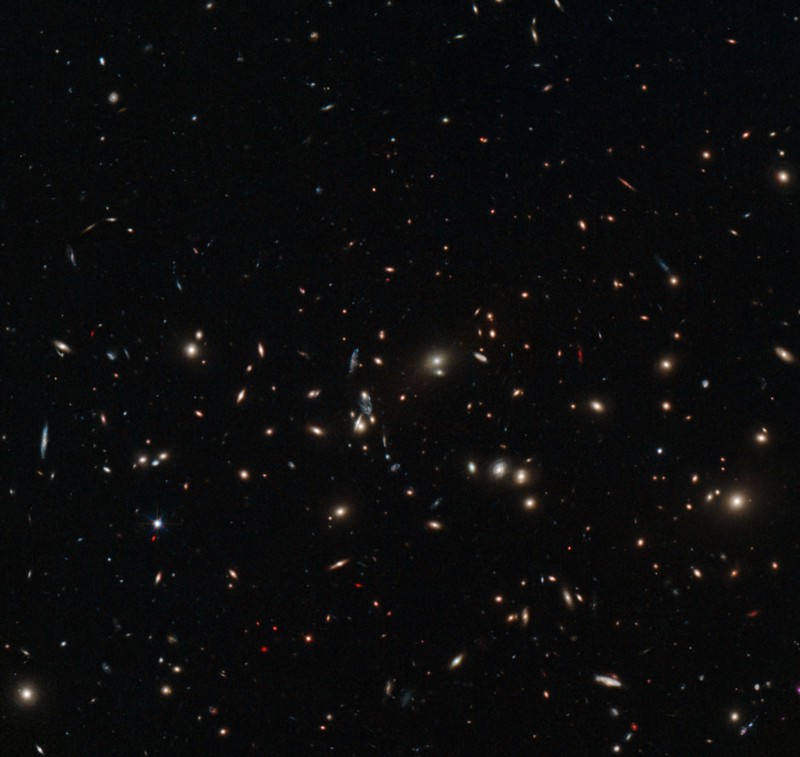
Today it is easy to look at these objects and say: "Oh, so this is a galaxy!". But a hundred years ago it was not so clear. Our telescopes were too bad to see in these objects the individual stars of which they were composed, and therefore they were considered just a kind of nebula. But they had something very strange: speed.
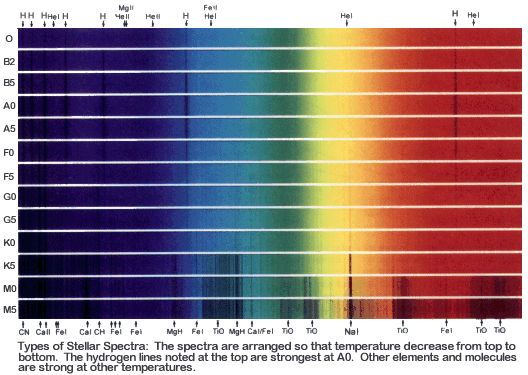
You see, each element has its own characteristic spectrum - a set of lines that it absorbs or emits - and this spectrum is fixed at certain wavelengths. Hydrogen, for example, always emits lines at 656, 486, 434 and 410 nm, each of which is associated with the transition of atomic energy. And in these spirals and elliptical nebulae all absorption lines appeared, but they were strongly displaced from the ordinary ones.

The simplest explanation? Not new types of elements or laws of physics. Just these objects quickly moved to us or from us. As with a sound — for example, a police car siren — the height changes, depending on whether it moves away from us or towards us, and at a distant object, the wavelength of the light will change depending on whether it moves away from us or toward us.
If he moves toward us, the light shifts to the blue end of the spectrum. If from us - to the red. At the beginning of the twentieth century, Vesto Melvin Sliffer discovered that the vast majority of spiral objects had light shifted to the red spectrum, so much so that they moved faster than all known objects in the Universe!
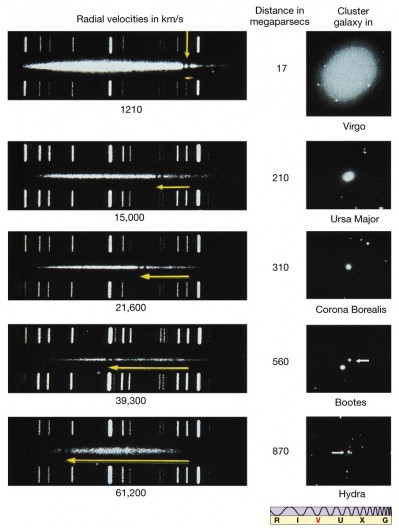
But it was not until 1920 that people began to collect pieces of this puzzle. Edwin Hubble - whose name is named for a famous telescope - observed flashes in these spirals in search of supernovae. To his surprise, while observing Andromeda, he discovered the first, then the second, then the third. And then he saw the fourth in the same place where she was first! He immediately realized that it was not a supernova, but a variable star. And thanks to an understanding of the nature of variable stars, he could calculate the distance to the object and found that it is outside our galaxy.
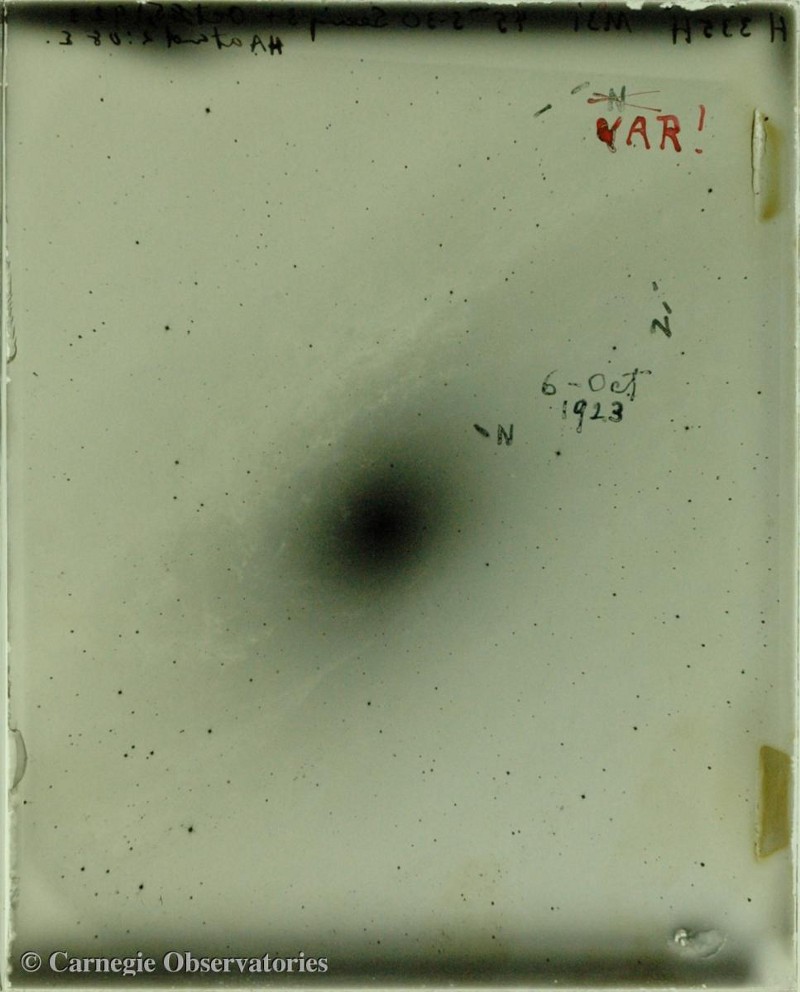
Of course, when he realized that the spiral objects contain stars, he did not dwell on it. He began to measure distances to dozens of other galaxies, and, combining the data obtained with Slip's data on speed, he found something remarkable: on average, the farther away the galaxy was from us, the faster it moved away from us.
So the expanding universe was born.

Within the framework of GR, space-time filled with matter or radiation in different places — and here it is — is not very well able to remain static. It either expands or contracts, depending on the energy content. Today, our universe is expanding, moving from a denser state in the past.
This also means that since the energy of light (radiation) depends on its wavelength, then if the Universe was previously smaller, it means that it was hotter and the energies in it were higher.
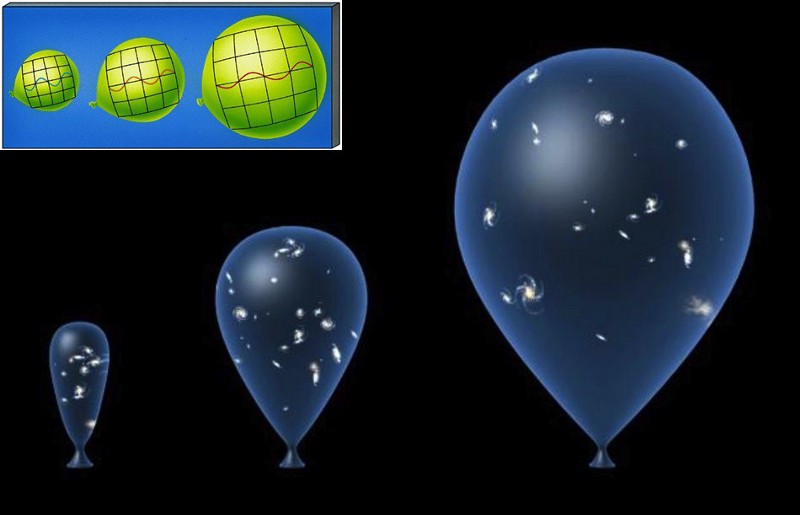
And what if we extrapolate it back? Imagine that the Universe is the way it is, but we will make it smaller and hotter in the past. How would it all be if we went into the past far enough?
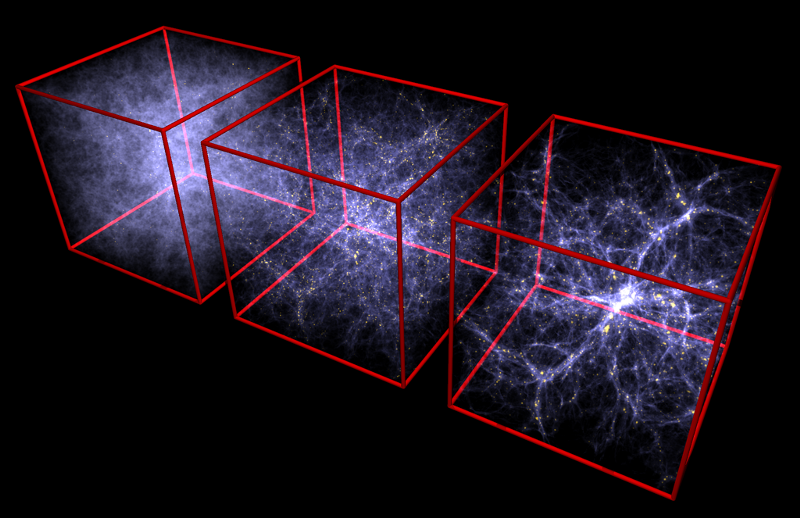
As a result, it is possible to come to such a hot and dense state that atoms cannot form; everywhere will be hot ionized plasma.

Earlier atomic nuclei cannot form; protons and neutrons will scatter, and create a sea of free particles without any substance other than hydrogen.
Prior to this, matter and antimatter are spontaneously created in pairs, creating all known (and, perhaps, not yet discovered) particles in the Universe.

And finally, if we go even further into the past, where everything was arbitrarily, and possibly infinitely hot and dense, we come to a singularity: a place where all the time, space and energy are concentrated at one point. And this idea that everything originated from the “cosmic egg”, from the “primordial atom” or from the “arbitrarily hot and dense state” is known today as the Big Bang.

Only this was the original definition of the Big Bang. Since this idea was voiced, we have learned a lot of new things about the Universe. Specifically, we learned that in addition to matter and radiation, the Universe also contains the energy inherent in space itself, or dark energy, or the cosmological constant, or vacuum energy (these are synonymous).
Now it is relatively small, but in the early stages it was unreal much.

Exactly: before the era of dominance of matter and radiation in the Universe, the energy inherent in the space itself prevailed. This theory was first proposed in the 1970-1980s, and confirmed by observations in the early 1990s. We are talking about cosmological inflation (or about the inflationary Universe): about the time when it was not matter with radiation that prevailed in the Universe but energy inherent in space itself.
And the Universe, in which vacuum energy prevails, or inflation, develops not in the same way as the Universe with the predominance of matter or radiation.

It may seem that they differ in trifles, but at the same time they expand at a given speed, starting from a certain moment. But is it? Let's look at the very beginning.

The blue and red lines are the traditional Big Bang scenario, where everything starts at t = 0, including space-time. But in the case of inflation (yellow), we do not reach the singularity. Instead, we can reach an arbitrarily small size in the past, and time goes back to infinity.
The Universe, where matter or radiation prevails, appears from a singularity, at the moment when space and time themselves appear for the first time, and there is no such moment in the inflationary Universe.
In other words, the point from which, according to our ideas, space and time appeared, does not have to be part of the Big Bang, even if there is an inflationary phase at the beginning of the Universe.

When cosmology specialists are an astrophysics division engaged in the birth and evolution of the Universe — they talk about the Big Bang, they mean one of two things:
The hot, dense, expanding state from which the observable Universe arose, which expanded, cooled, and gave rise to elements, atoms, stars, molecules, planets and us.
The original singularity representing the birth of space and time
The problem is that if in the 1960s these explanations were interchangeable, now it is not.
The first explanation — the hot, dense, expanding state — still makes sense in the role of the Big Bang, but the second is no longer. On the question of where space and time came from, there are still debates from both sides, and this recent work is just a drop in the ocean of these disputes.

The main thing that needs to be understood from this is the Big Bang, although it represents itself from where everything that we see in the Universe has come from, but it is not its very beginning. We can go back, up to the time this explanation makes sense, to the inflationary Universe, and we have enough reason to argue and discuss the clarifications of what this means for the beginning of all that we know.

But was there a big bang? According to the first definition - yes, of course. And if you use the latter, you better rethink the term used. Even if you're not the only one using it - are you doing it right?
Source: https://habr.com/ru/post/396207/
All Articles